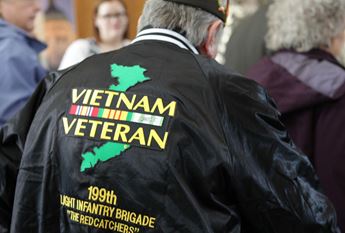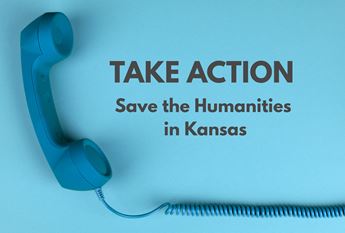

Convergence of Cultures
September 22, 2021
Two hundred years ago this month, six men leading pack horses carrying trade goods left a small town in central Missouri heading west across Indian Territory through modern-day Kansas. They crossed the Arkansas River into Mexico, which had just gained its independence from Spain. Unlike previous traders who had attempted to sell their wares in Santa Fe, this group received a warm welcome from the Mexican government and a nice profit from their sales. This marked the beginning of six decades of two-way commercial exchange on what became known as the Santa Fe Trail. The trail’s impact and legacy is the focus of the new documentary entitled “The Road to Santa Fe” which premieres this week on KCPT – Kansas City Public Television. The documentary is produced by filmmaker Dave Kendall of Prairie Hollow Productions and the Flint Hills Discovery Center Foundation with the support of a Humanities for All grant from Humanities Kansas. As Kendall explains in the introduction, the film looks at the “historical impact of the trail, the impact it had upon the indigenous populations, and the manner in which it brought people from a variety of cultures together.”
The Santa Fe Trail’s story is told through firsthand narratives of trail travelers and the scholarly research of trail historians. Few, if any, know this story better than historian Leo Oliva, a founding member of the Santa Fe Trail Association and a leading expert on the history of the Santa Fe Trail. Oliva shares his knowledge of the history of the trail in the documentary, including the story of William Becknell’s 1821 journey to Santa Fe and how its success led to more journeys. “There was a great demand for cloth items in particular, and this included cottons, linens whatever that was available, and they sold out [of goods], made all this money,” recounts Oliva. “[Becknell] begins organizing another trip in 1822, and he decides that he thinks he can take wagons to Mexico.”

Image courtesy of Prairie Hollow Productions.
Trade between the United States and Mexico flowed both ways, according to Gene Chávez, a cultural diversity consultant. Chávez clarifies the misconception that the Santa Fe Trail was “a one-way route taking goods from the United States by American entrepreneurs. It really wasn’t that way,” he explains in the film. “It was a two-way thoroughfare. And without the entrepreneurs on the Mexican side, it wouldn’t have happened. It opened up trade with the Hispano world.”

Image courtesy of Prairie Hollow Productions.
While trade on the trail created opportunities for some, it caused devastation for others. James Pepper Henry, executive director of the First Americans Museum in Oklahoma City and an enrolled member of the Kaw Nation, describes the impact of the trail upon indigenous groups such as the Kaw Nation. The film chronicles how the Kaw Nation’s land diminished drastically, shrinking from the area of modern-day Kansas in 1821 to a small reservation at Council Grove in the 1840s to removal from Kansas to the Indian Territory in 1873. Henry reflects on his ancestors’ loss of land and independence in the film: “I think about my family and my relatives and my tribe being a free people to go wherever they wanted to live to being corralled and that land base shrinking each time there was a push westward by settlers and then getting to the point where there was almost nothing."

Image courtesy of Prairie Hollow Productions.
Historians joining Oliva, Chávez, and Henry in the documentary include the directors of the state historical societies in Kansas and Missouri – Jennie Chinn and Frances Levine; William Worley, Kansas City historian; Ron Parks, former administrator of the Kaw Mission State Historic Site; Larry Short, president of the Santa Fe Trail Association; Ken McClintock, Council Grove historian; and George Elmore, park ranger at Fort Larned National Historic Site. Accounts from travelers along the trail are heard from in excerpts from journals such as those of Susan Shelby Magoffin and Marian Sloan Russell.
Two-thirds of the Santa Fe Trail crossed modern-day Kansas and the state’s trail sites feature prominently in the film. The program starts out in Council Grove and returns to this historic trail town throughout the show, with excerpts from commissioner George Sibley’s journal describing the 1825 treaty with the Osage that was signed there and Josiah Gregg’s “Commerce of the Prairies” providing graphic accounts of a trading caravan’s departure from this campground rendezvous in 1831. “Council Grove is one of the key points in on the trail,” observes Oliva.

Santa Fe Trail Map. Image courtesy of Prairie Hollow Productions.
The flow of freight wagons along the trail came to an end in 1880, when the Atchison, Topeka & Santa Fe Railway completed construction across the plains and reached Santa Fe. The trail’s legacy lives on in the stories of the people whose lives converge along this historic route.

"Road to Santa Fe" filmmaker Dave Kendall of Prairie Hollow Productions
How to Watch “The Road to Santa Fe”
This 90-minute documentary airs on KCPT at 8pm on Friday, September 24, 2021, with a repeat broadcast the following Sunday afternoon, September 26, 2021, at 12:30. An outdoor screening is scheduled for 7pm on October 14, 2021, at the Blue Earth Plaza adjacent to the Flint Hills Discovery Center in Manhattan. In early November, the program will be made available to PBS stations throughout the U.S. by NETA, the National Educational Telecommunications Association. The program is also available online through Vimeo-on-Demand as well as on DVD, both of which can be accessed at PrairieHollow.net. The DVD contains a half-hour of additional content, including stories about the DAR markers that line the trail as well as the new walking path around Black Jack Ruts near Baldwin City, which features a walking conversation between site manager Roger Boyd and associate producer Rex Buchanan.
Join the Movement of Ideas
- VISIT ruts, swales, historical markers, and more at Kansas Santa Fe Trail sites. This interactive map shows you the places you can go to map the journey of the Santa Fe Trail travelers across Kansas.
- READ about what it was like to be a woman and travel on the Santa Fe Trail in Down the Santa Fe and Into Mexico: The Diary of Susan Shelby Magoffin, 1845-1847. Edited by Stella M. Drumm.
- SPARK conversations about westward expansion and Mexican American cultural heritage with Speakers Bureau presentations by Leo E. Oliva and Gene Chávez. Oliva’s “Railroaded: Industry that Shaped Kansas” and Chavez’s “The Vaqueros” and “Flour Power” presentations are available free-of-charge to Kansas nonprofits.




